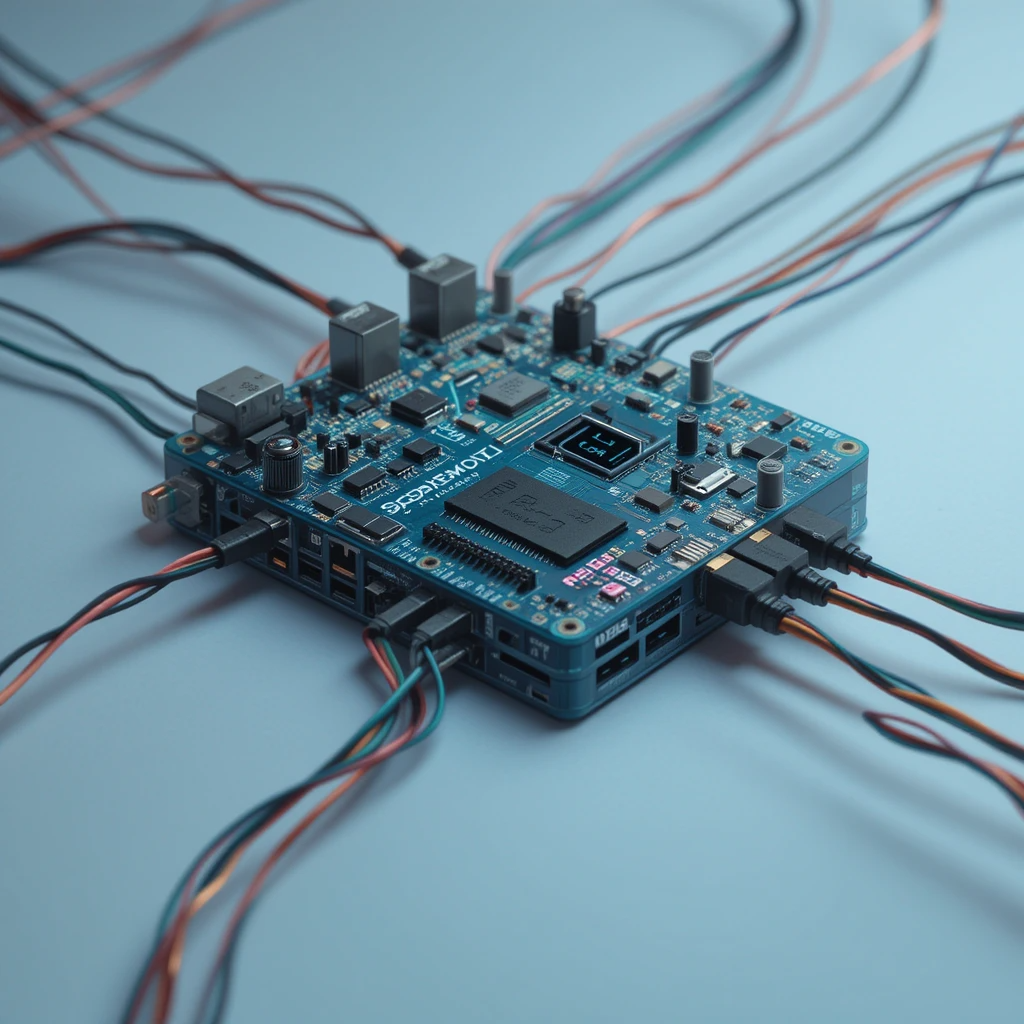How to Set Up PPSSPP Pico Wiring HyperHDR for an Immersive Gaming Experience
In the world of retro gaming, achieving the best performance and visuals requires a combination of powerful software and well-integrated hardware. PPSSPP Pico Wiring HyperHDR is an innovative setup that enhances PSP emulation using a Raspberry Pi Pico, HyperHDR ambient lighting, and the PPSSPP emulator. This setup provides customized lighting effects, better button mapping, and low-latency gaming, making your retro gaming experience much more immersive.
If you’re interested in creating this setup for your gaming space, follow this guide to understand its components, setup process, and troubleshooting tips.
What Is PPSSPP Pico Wiring HyperHDR?
Understanding the Three Main Components
- PPSSPP Emulator: An open-source PlayStation Portable (PSP) emulator that allows you to play PSP games on different devices, including PCs, Android, and Raspberry Pi.
- Raspberry Pi Pico: A microcontroller board that connects to input devices and helps control lighting effects.
- HyperHDR: An advanced open-source ambient lighting system that synchronizes LED lights with your screen’s content, enhancing the gaming experience with dynamic illumination.
By combining these three technologies, PPSSPP Pico Wiring HyperHDR transforms standard gaming into a visually exciting and highly responsive experience. The Raspberry Pi Pico enables custom input handling, while HyperHDR ensures real-time ambient lighting synchronization.
Why Use PPSSPP Pico Wiring HyperHDR?
1. Immersive Gaming with HyperHDR
HyperHDR adds dynamic lighting effects that adjust in real-time according to the game’s colors and movements. This effect is similar to Philips Ambilight but customized for your gaming setup.
2. Enhanced Control with Raspberry Pi Pico
Using the Raspberry Pi Pico, you can configure custom gamepad inputs, assign macros, and even integrate haptic feedback for better gameplay control.
3. Low Latency and Better Performance
Traditional setups may introduce lag when processing inputs and lighting changes. However, PPSSPP Pico Wiring HyperHDR reduces latency by leveraging Raspberry Pi Pico’s fast response times and HyperHDR’s efficient processing.
4. Customization and Expandability
This setup is highly modular and upgradeable. You can customize LED patterns, remap controls, and optimize performance settings without replacing major components.
What You Need to Set Up PPSSPP Pico Wiring HyperHDR
To get started, ensure you have the following hardware and software components:
Hardware Requirements:
- Raspberry Pi Pico (to handle inputs and communicate with HyperHDR)
- LED Strips (preferably addressable RGB LEDs compatible with HyperHDR)
- Power Supply (to ensure stable power delivery to all components)
- MicroSD Card (for storing emulator files)
- Resistors and Capacitors (to fine-tune electrical signals and protect circuits)
- USB Cable (to connect the Raspberry Pi Pico to the gaming setup)
Software Requirements:
- PPSSPP Emulator (latest version for Windows, Linux, or Android)
- HyperHDR Software (to control LED lighting effects)
- MicroPython or CircuitPython (to program the Raspberry Pi Pico)
Step-by-Step Guide to Setting Up PPSSPP Pico Wiring HyperHDR
Step 1: Prepare the Raspberry Pi Pico
- Download and install MicroPython on your Raspberry Pi Pico.
- Write a script that allows the Pico to read button inputs and control LEDs.
- Test the Pico’s input and output functionality using simple Python scripts.
Step 2: Install and Configure PPSSPP
- Download the PPSSPP emulator and install it on your preferred device.
- Transfer PSP game files to your MicroSD card.
- Configure controller inputs to sync with the Raspberry Pi Pico.
Step 3: Set Up HyperHDR for Ambient Lighting
- Install HyperHDR software on a PC or Raspberry Pi.
- Connect and configure RGB LED strips according to your screen’s size.
- Use HyperHDR’s calibration tools to fine-tune the lighting effects.
Step 4: Connect and Test the Setup
- Ensure all wiring is correctly placed and powered.
- Start the PPSSPP emulator and launch a game.
- Observe how HyperHDR reacts to screen movements and adjust settings as needed.
Troubleshooting Common Issues
Even with proper setup, you might encounter some challenges. Here’s how to fix them:
1. LED Lights Not Responding
- Check for loose wiring or incorrect pin assignments.
- Ensure the HyperHDR service is running and correctly linked to the LED controller.
- Verify that the LED strips are compatible with HyperHDR.
2. Input Delay or Controller Lag
- Reduce the PPSSPP emulator’s resolution to improve performance.
- Use high-quality USB cables for better data transmission.
- Update the Raspberry Pi Pico firmware to the latest version.
3. HyperHDR Not Syncing with PPSSPP
- Restart the HyperHDR software and reload the LED configuration.
- Check if the correct video capture settings are applied in HyperHDR.
- Make sure your graphics drivers are up to date.
Optimizing PPSSPP Pico Wiring HyperHDR for the Best Experience
Use High-Quality LED Strips
Choose addressable RGB LED strips like WS2812B or APA102 for better lighting synchronization.
Fine-Tune HyperHDR Settings
Adjust brightness, color accuracy, and latency settings in HyperHDR’s configuration panel.
Improve PPSSPP Performance
- Enable frame skipping to avoid slowdowns.
- Adjust buffered rendering settings to reduce lag.
- Use fast memory emulation for smoother gameplay.
Conclusion: Elevate Your Retro Gaming Setup
Setting up PPSSPP Pico Wiring HyperHDR is an excellent way to enhance your gaming experience. By combining PPSSPP’s powerful emulation, Raspberry Pi Pico’s control capabilities, and HyperHDR’s ambient lighting, you can transform how you play retro games.
With this setup, you get dynamic lighting effects, precise button mapping, and ultra-responsive gameplay. Whether you’re a retro gaming enthusiast or just looking for an exciting project, this system offers endless customization and future-proof upgrades.
Start building your PPSSPP Pico Wiring HyperHDR setup today and enjoy gaming like never before!
Frequently Asked Questions (FAQs)
Q: Can I use HyperHDR with other emulators?
A: Yes, HyperHDR works with many emulators, including RetroArch and Dolphin.
Q: Do I need programming skills for Raspberry Pi Pico?
A: Basic Python knowledge is helpful but not mandatory. Many ready-to-use scripts are available online.
Q: What’s the best LED strip for this setup?
A: Addressable RGB LEDs (like WS2812B) offer the best synchronization with HyperHDR.
Q: Does this setup work on mobile devices?
A: PPSSPP is available for Android, but HyperHDR requires a PC or Raspberry Pi for full functionality.



